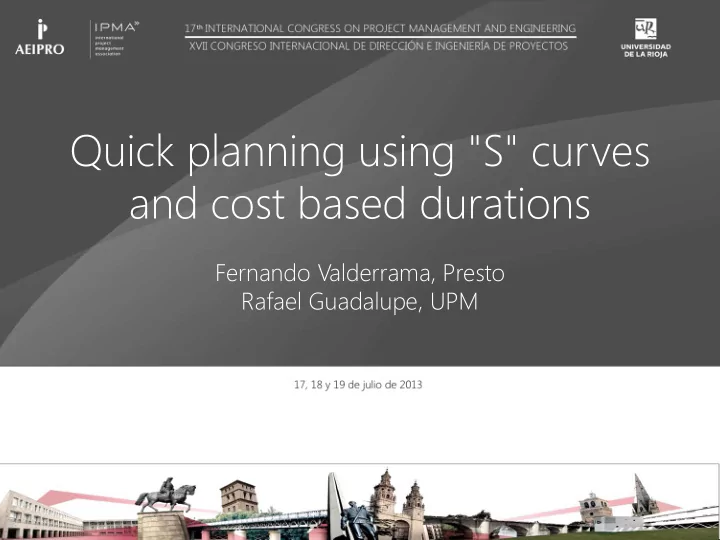

Quick planning using "S" curves and cost based durations Fernando Valderrama, Presto Rafael Guadalupe, UPM
Objective Fully automated model for quick planning based on the project cost estimate • Total duration • Allocation of cost over time • Defining and sequencing activities • Activities duration • Number of crews 2
Estimating total duration Relationship between cost and time (BCIS, 2009) Use Duration (weeks) General 22.4 x LOG ( € ) - 91 Collective housing 33 x LOG ( € ) - 146 Single family 31 x LOG ( € ) - 131 3
Allocation of cost over time Expenses by periods (Lara and Dinsmore) 4
Defining and sequencing activities Activities sequencing and cost allocation based on “S” curve (Presto) 5
Activities duration Based on • Proportionality between activity (resources) cost and duration and total (resources) cost and duration • Estimation of the number of simultaneous activities • Correction for activity size • A simultaneity coefficient V (0 = serial, 1 = parallel) is inserted to adapt to different situations Activity duration = (Activity cost / Total cost) ^ (1 - V) x Total duration 6
Final result Presto No. of crews = Time based duration / Cost based duration 7
Planned vs. calculated durations Commercial center Activities at division level, V = 0,6 8
Planned vs. calculated durations Residential building Activities at work unit level, V = 0,4 9
Future work • Refine and validate the model for different project types and sizes 10
Conclusions Starting from an estimate, the methodology is completely automatic, with the following decision points: • Applying the BCIS expression • Checking the sequential order • Selecting the right “S” curve for the project • Deciding the simultaneity coefficient 11
Thank you
Recommend
More recommend